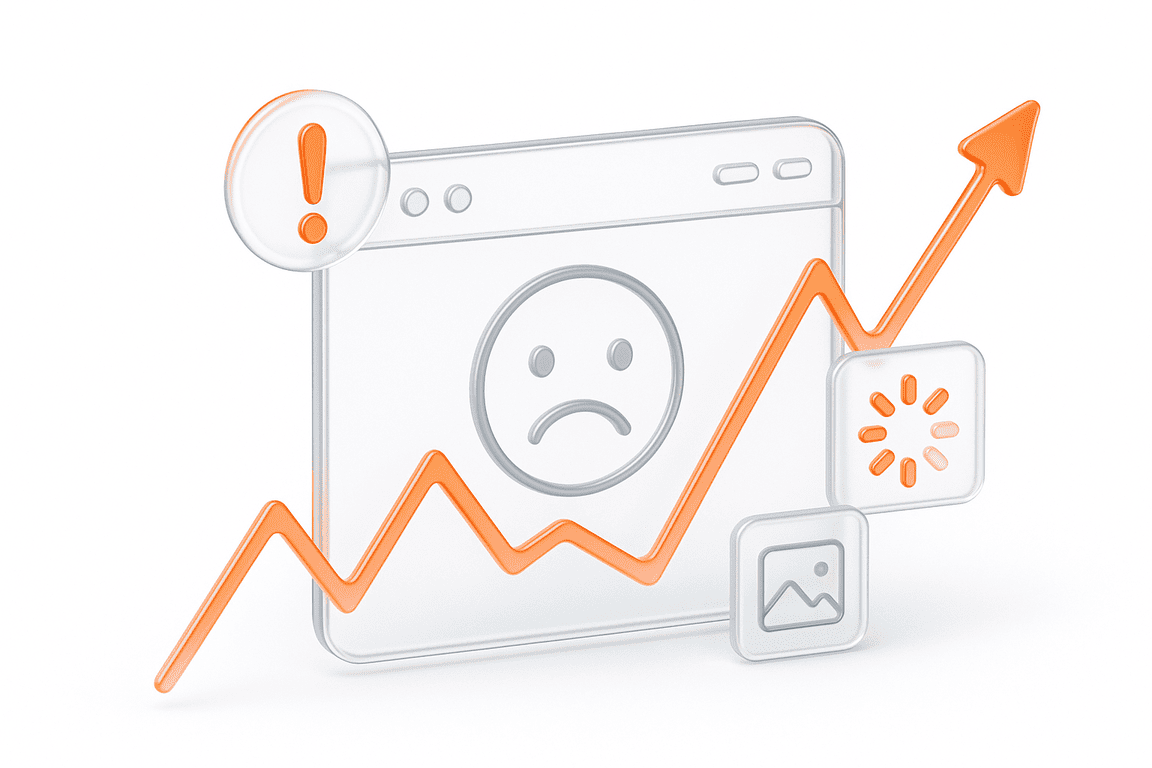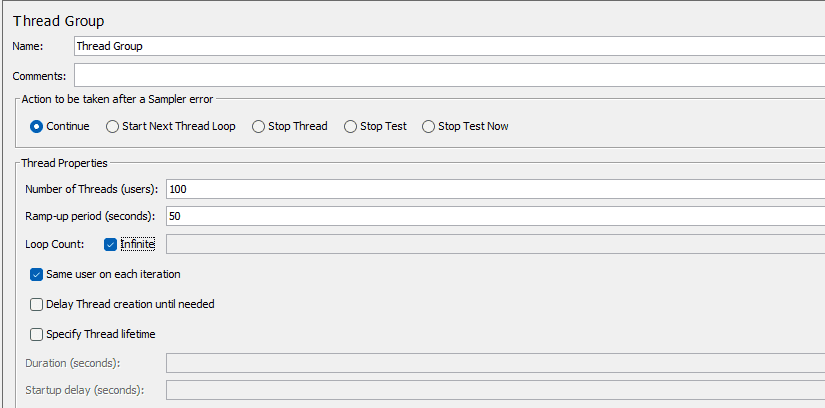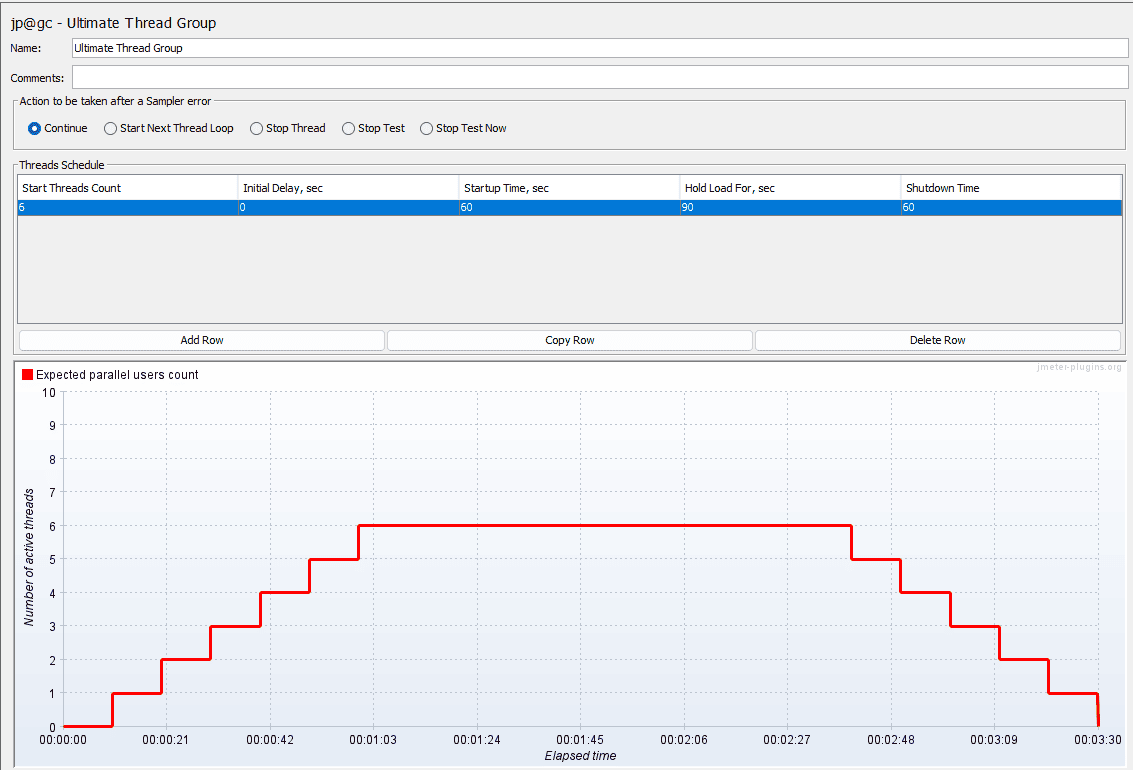Key Takeaways
The Apache JMeter ramp up period defines how quickly test threads start, shaping the load profile your system experiences. A poorly chosen value can distort results — too fast and you simulate unrealistic spikes, too slow and you never reach steady state.
This guide clarifies what is ramp up period in JMeter, how to configure it, and when to adapt it for complex scenarios such as cloud autoscaling or mobile app performance testing using JMeter. You’ll learn calculation methods for ramp up time in JMeter, plugin-based enhancements, and proven patterns from large-scale performance engineering to make this setting work for your testing goals.
What Is JMeter Ramp Up Period?
JMeter ramp up period is the total time JMeter takes to start all the threads in a test plan’s thread group. If you set 100 threads and a ramp-up of 50 seconds, JMeter will launch them evenly — about one thread every 0.5 seconds — until all are active. This mechanism controls the pace of virtual user arrival, not the throughput directly.
Its main purpose is to let your system under test (SUT) adapt gradually to increasing load, avoiding unrealistic startup spikes and giving caches, connection pools, or just-in-time compilation time to stabilize. Performance engineers often start with a ramp-up equal to the number of threads (in seconds) and then adjust based on observed server behavior and test objectives.
Ramp-up does not guarantee a specific request rate. The throughput in JMeter depends on concurrency and cycle time, which you can estimate with Little’s Law:
Throughput (TPS) ≈ Threads ÷ (Response Time + Think Time + Pacing)
For example, if you target 200 TPS and average response time is 0.5 seconds, you need about 100 concurrent threads. The ramp-up then determines how quickly you reach that concurrency — fast for stress tests, slower for steady-state benchmarking.
Well-chosen ramp-up settings also align with real-world triggers like cloud auto-scaling policies. For instance, if AWS scaling evaluates CPU usage every 5 minutes, a 1-minute ramp-up might finish before scaling starts, missing critical insights. In such cases, set a ramp-up that spans or exceeds the evaluation window.
How to Use JMeter Ramp-Up Period
Follow these steps to set up and use the ramp-up period effectively in Apache JMeter:
Configuring Your JMeter Ramp-Up Period
Configuring the ramp up in JMeter is matching the load profile to your test objectives and the system’s real-world usage patterns.
1. Choose the Right Thread Group Type
Plugins are also available:
2. Calculate Thread Start Intervals
Formula:
Start Interval = Ramp-Up Time ÷ Number of Threads
Example: 60 seconds ÷ 120 threads = 0.5 seconds between each start.
3. Synchronize With Test Duration
Ensure the ramp-up time in JMeter allows all threads to start before the first ones finish their iterations. Otherwise, you’ll never reach full concurrency.
4. Integrate With Timers and Controllers
Combine ramp-up with pacing timers or throughput shaping to fine-tune load. This ensures the request rate aligns with the desired TPS, even after all threads have started.
5. Account for Environment Behavior
For distributed or JMeter in the сloud testing, match ramp-up to network latency, node startup time, and any provisioning delays in cloud-based load generators.
6. Validate Against Best Practices
7. Document Your Settings
Always record the exact number of threads, ramp-up time in JMeter, and any custom thread group configuration for reproducibility.
Common Pitfalls and How to Avoid Them
Even experienced testers can misconfigure the ramp-up period in ways that skew results or waste test runs. Here are the most frequent issues and how to prevent them:
Final Thought or Conclusion
A well-configured ramp-up period can make the difference between a realistic performance test and one that misrepresents system behavior.
In large-scale ramp-up tuning becomes even more critical. Longer periods can help emulate gradual user adoption, while shorter bursts may be better for stress testing and finding breaking points. The right approach depends on your goals, your system’s scaling profile, and how closely you want to mirror production usage patterns.
For full reliability, document your settings, validate them against test goals, and refine over multiple runs. By treating the ramp-up configuration as a core design decision — not an afterthought — you ensure your tests are both accurate and actionable.
Related insights in blog articles
Professional vs. In-House Website Load Testing: Which One Do You Really Need?

Thriving in the fierce digital space is what every business strives for. While high-traffic events like targeted marketing campaigns, paid ads, product launches, and seasonal spikes certainly help win over customers and skyrocket sales, they also abruptly expose hidden website vulnerabilities to users. To assess website readiness for traffic surges and prevent weaknesses, such as […]
How Website Performance Impacts E-Commerce Sales and Cart Abandonment

Every e-commerce store has mere milliseconds to make the right impression on shoppers. When prospects land on a product page, they assess every single metric, and e-commerce website performance and speed are the most critical ones. In most scenarios, impatient users will bounce instantly — at the slightest hint of latency caused by high loads […]
10 Signs Your Website Can’t Handle Traffic Spikes: Everything you need to know

Your campaign goes live, clicks start pouring in, and traffic shoots up fast. It’s the moment you’ve been waiting for, until everything slows down. Pages take ages to load, checkout freezes, and visitors disappear before they can buy. It’s a frustrating twist: the success of your marketing draws in more people than your website can […]
Why Averages Lie: Mathematical Methods for Load Testing

Relying on “average” metrics alone makes load testing surprisingly inaccurate. In this article, we’ll show how to avoid the usual traps and walk through practical techniques for mathematically modelling a workload profile, from analyzing variance and correlations to spotting Simpson’s paradox and validating the final model. When a company moves to a new system, the […]
Be the first one to know
We’ll send you a monthly e-mail with all the useful insights that we will have found and analyzed
People love to read
Explore the most popular articles we’ve written so far
- Top 10 Load Testing Tools for 2025: The Deep Dive Sep 9, 2025
- Cloud-based Testing: Key Benefits, Features & Types Dec 5, 2024
- Benefits of Performance Testing for Businesses Sep 4, 2024
- Android vs iOS App Performance Testing: What’s the Difference? Dec 9, 2022
- How to Save Money on Performance Testing? Dec 5, 2022



